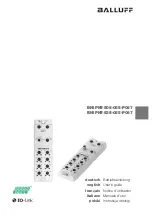
Advanced commissioning
7.18 Efficiency optimization
SIMATIC ET 200pro FC-2 converter
Operating Instructions, 04/2018, FW V4.7 SP10, A5E34257324B AF
183
7.18
Efficiency optimization
Overview
The efficiency optimization reduces the motor losses as far as possible.
Active efficiency optimization has the following advantages:
●
Lower energy costs
●
Lower motor temperature rise
●
Lower motor noise levels
Active efficiency optimization has the following disadvantage:
●
Longer acceleration times and more significant speed dips during torque surges.
The disadvantage is only relevant when the motor must satisfy high requirements relating to
the dynamic performance. Even when efficiency optimization is active, the inverter closed-
loop motor control prevents the motor from stalling.
Precondition
Efficiency optimization functions under the following preconditions:
●
Operation with an induction motor
●
Vector control is set in the inverter.
Function description
Figure 7-39 Efficiency optimization by changing the motor flux
The three variables that the inverter can directly set, which define efficiency of an induction
motor, are speed, torque and flux.
However, in all applications, speed and torque are specified by the driven machine. As a
consequence, the remaining variable for the efficiency optimization is the flux.
















































